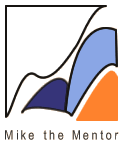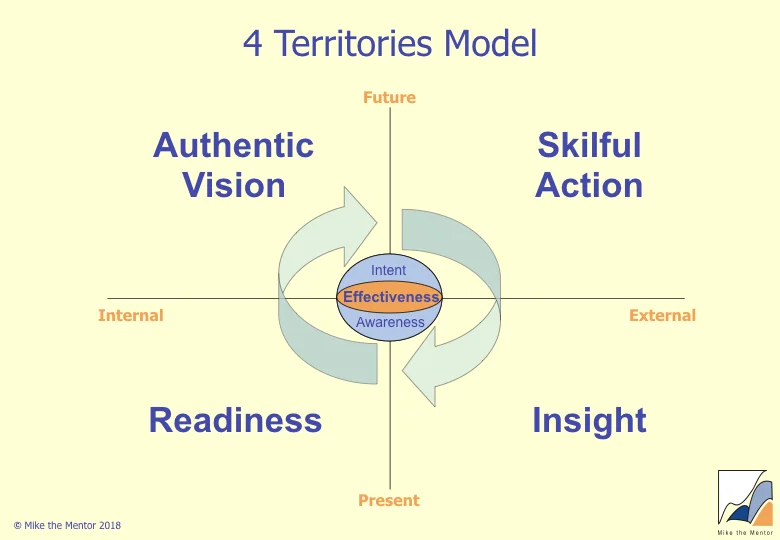Reinventing Organisations
/Reinventing Organizations by Frederik Laloux is an important book on leadership and organisational design.
Laloux is interested in the forms of organisation that can give expression to the profound changes in consciousness, culture and social systems that are emerging. What makes his work so exciting is that he's not just theorising - he's found organisations that are already operating in this way, and in some cases have been doing so for decades. He's then analysed them and has identified the patterns of organising and operating that they have in common.
The Evolution of Organisations
It's helpful in understanding his findings to see how organisations have evolved. For centuries the predominant form of organisation was Bureaucracy, a top down command and control system well-suited to stable environments, a stage Laloux calls "Amber" (see table below). (The colours of the different types of organisation come from Ken Wilber's labels for the different developmental levels in individuals and societies - see Development Stage Frameworks to understand how Wilber's scheme fits with that of other frameworks).
The key breakthroughs that Amber brought to what went before ("Red" organisations based around power exercised through interpersonal relationships) were formal roles and processes, which enabled large bureaucratic organisations to be built. But such organisations eventually turned out to not be up to the task of responding to society's emerging needs and, with the Age on Enlightenment and the Industrial Revolution, "Orange" organisations that valued innovation, accountability and merit began to emerge.
These Orange organisations have been, and continue to be, extraordinarily successful, but they too have shown their limitations (most dramatically perhaps in the 2008 Banking Crisis). These limitations in turn drove the emergence of "Green" organisations with their emphasis on empowerment, values and stakeholders. And now we are seeing the early instances of the next generation of organisation - "Teal".
| Name "Guiding Metaphor" |
Description | Examples | Key Breakthroughs |
|---|---|---|---|
| Amber "Army" |
Bureaucracy. Highly formal roles within a hierarchical pyramid. Top-down command and control (what and how). Stability values above all through rigourous processes. Future is a repetition of the past. | - Catholic Church - Military - Most government agencies - Schools |
- Formal roles (stable and scaleable hierarchies) - Processes (long-term perspectives) |
| Orange "Machine" |
Goal is to beat the competition, and achieve profit and growth. Innovation is the key to getting ahead. Management by Objectives (command and control on what; freedom on the how) | - Multinational companies | - Innovation - Accountability - Meritocracy |
| Green "Family" |
Within the classic pyramid structure, focus on culture and empowerment to achieve extraordinary employee motivation | - Culture driven organisations (eg Ben & Jerry's, John Lewis Partnership) | - Empowerment - Values-driven culture - Stakeholder model |
| Teal "Living Organism/ System" |
No pyramid. Self-managing teams where power is uniformly distributed. A living purpose and social mission which creates life | - Holacracy - Buurtzorg NL USA - Patagonia |
- Self-management - Wholeness - Evolutionary purpose |
Assumptions
Each kind of organisation is underpinned by very different assumptions about people. Those underlying Teal organisations are that people:
are creative, thoughtful, trustworthy, reliable, self motivated adults, capable of making important decisions
are accountable and responsible for their decisions and actions
are fallible. They make mistakes, sometimes on purpose
are unique
want to use their talents and skills to make a positive contribution to the organisation and the world.
So, rather different from the assumptions that most organisations work from!
The 3 Breakthroughs of Teal Organisations
The table above shows the key breakthroughs that enable each subsequent organisational type to develop from the preceding type. Teal organisations embody 3 key breakthroughs:
Self-management: a system based on peer relationships, without the need for either hierarchy or consensus. This is a step beyond Green empowerment - where power is pushed down the hierarchy - to a system where everyone holds power, but no-one holds power over anyone else. Teams are self-governing and self-organising. There is no middle management. Management tasks (eg recruiting, purchasing, performance management,etc) are distributed throughout the team.
Wholeness: bringing all of ourselves to work. We stop hiding behind our professional mask and leaving parts of ourselves behind when we come to work. Instead we bring more of our potential, creativity and energy and no longer fear to be fully ourselves. In daring to bring all of us to work, we shift relationships from Persecutor, Rescuer & Victim to a healthier level of Challenger Coach & Creator.
Evolutionary purpose: listening to what the organisation wants to become and what purpose it wants to serve. The Teal organisation has a life of its own and we learn to listen to what it is seeking to become and what the positive difference it wants to make in the world is. As in all organisations, everyone notices when something isn't working as well as it could or when an opportunity opens up - but in Teal organisations people act on this 'sensing' so that the organisation is continually aligning and re-aligning itself with its emerging purpose.
The Impact
In the Netherlands, there is a tradition of neighbourhood nursing. Originally self-employed, in the 1990s the nurses were encouraged to join nursing organisations. As these neighbourhood nursing organisations grew in size, they sought to increase efficiency and achieve economies of scale by specialising the tasks - administrators managed the intake of new patients and planned the nurses' daily schedule; call centres were set up to take patients' calls; cleaners were employed so that nurses' time could be used more effectively; and regional managers were employed to supervise the staff - in short Orange organisations were established.
In 2006 Jos de Block, a former nurse who dreamed of a different way of delivering high-quality nursing care, founded Buurtzorg as a new kind of Dutch neighbourhood nursing organisation. Buurtzorg is one of the organisations Laloux researched, and embodies the 3 breakthroughs. Though not set up with the intention of growing, by 2013 it had grown from 10 to 70,000 staff and was employing two thirds of all neighbourhood nurses in the country. A 2012 Ernst & Young study found patients required an average 40% less care than in other organisations, and stayed in care only half as long. Hospital admissions were reduced by one third, with shorter than average stays.
Nurses love working for Buurtzorg - for example, it was "Employer of the Year" in the Netherlands for the second time on 2012. The Ernst & Young Report estimated that the Dutch State would save €2 billion if all home care were delivered in Buurtzorg fashion.
In short better quality care for patients, greater job satisfaction for nurses, and lower care costs for the state.
Find out more
There is a video of Laloux speaking on his book Reinventing Organisations on YouTube. It's 1 hour 43 minutes in length and well worth the time. And you can acquire the book from his website www.reinventingorganizations.com where you can buy it in the conventional way, or using a Pay-What-Feels-Right model.

